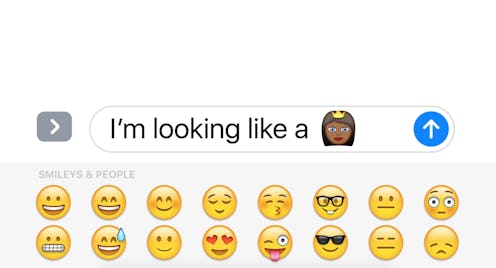
During its 2016 Worldwide Developers Conference keynote speech, Apple revealed its new predictive emoji technology. Ever wish you could express yourself solely through emojis without having to flip through the nearly endless icons? On-the-go texters will never have to sacrifice another emoji again, now that Apple has the artificial intelligence to replace words and phrases with the cute little images. Whose day wouldn't be brightened by a message like that? At the very least, incorrect emoji predictions could trigger a few giggles.
Apple was not the first to develop this technology, but their use of it will likely cause it to become more widespread. In December 2014, a third-party keyboard app called "Emoji Type" suggested emojis to replace certain words or phrases. In February 2015, another app, called Swiftkey, began commercializing the same intelligence. Initially, Swiftkey became popular for its swipe text technology, which allows a texter to swipe from one letter to the next without lifting a finger.
Apple has not explained how its technology will be different from the earlier versions that have been created by outside companies. What's certain is that the new service will be specially catered to the brand's IOS system.
The mounting tendency to communicate via emojis reflects an age-old component of human nature which has driven artists to express themselves visually for centuries. People are moved most by what they can see. Novels and poetry, for example, are most impactful when they allow a reader to envision an entire world, along with the emotions and the characters that fill it. Photography, painting, and drawing depend on nonverbal coding to evoke a certain feeling or emotion in the viewer. University of Waterloo new media studies professor Aimée Morrison told CBC News that emojis constitute a new language which opens up room for creativity and expression:
They fill a need we didn't know we had until we had the available means to fulfill it. Instead of laboriously typing out something that may not come out the way you intended, you can use emojis ... It just gives us another shortcut that also allows for creativity.
New media's reliance on visuals — whether it's used by Apple, online magazines, or digital advertisements — has taken full advantage of this to attract readers and convey messages in a way that sticks. This has effectively changed the way we interact with information daily, morphing us into rapid comprehension machines. It may seem like simple enough technology, but it reflects a much bigger picture, which makes one wonder where technology will have taken us decades from now.
The WWDC will continue through June 17 in San Francisco, leaving room for much more explanation, as well as for the unveiling of fresh designs and breakthrough technology.
Image: Apple